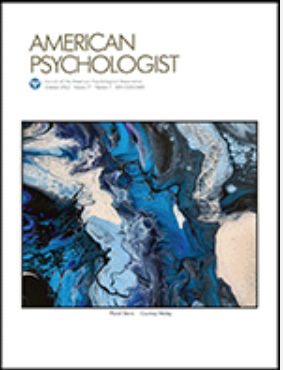Bystanders and the murder of George Floyd: Analyzing bystander intervention in the course of a police killing.
IF 12.3
1区 心理学
Q1 PSYCHOLOGY, MULTIDISCIPLINARY
引用次数: 0
Abstract
Using a detailed transcription, obtained from body-camera, CCTV, and smartphone footage of the murder of George Floyd, we examine the behavior of bystanders as events unfolded. Analysis reveals 205 direct verbal bystander interventions comprised of five forms (declaratives, assessments, interrogatives, imperatives, insults). We also describe the key physical intervention strategies deployed by the bystanders. We show that bystanders prioritize interventions based on what they "know" (rather than asking questions or making demands). We suggest that this is because assessment-based strategies are less likely to be seen as a direct challenge to the power of the police and therefore have more chance of inducing constructive engagement. Although bystanders were ultimately unsuccessful in persuading the police to change course, we identify five moments in the action sequences where the assessment concerns of the bystanders were taken up by the officers-albeit fleetingly. We argue that these bystander interventions create the opportunity for officers to break the pattern of behavior that will lead to murder. It is a failure of the officers and not the bystanders that the police are unable to take those opportunities. We argue that assessment-based interventions have the potential to breach structural and situational power dynamics that usually lead to bystander interventions being overridden or ignored. We conclude by drawing some wider implications for the way bystanders and police officers can be trained to improve the safety of individuals caught up in police arrests. (PsycInfo Database Record (c) 2025 APA, all rights reserved).旁观者与乔治·弗洛伊德谋杀案:分析警察杀人过程中的旁观者干预。
通过从随身摄像机、闭路电视和智能手机中获得的乔治·弗洛伊德谋杀案的详细记录,我们研究了事件发生时旁观者的行为。分析显示205个直接的口头旁观者干预包括五种形式(陈述句,评价,疑问句,祈使句,侮辱)。我们也描述了关键的物理干预策略部署的旁观者。我们表明,旁观者根据他们“知道”的情况(而不是提出问题或提出要求)优先考虑干预措施。我们认为,这是因为基于评估的策略不太可能被视为对警察权力的直接挑战,因此更有可能引发建设性的参与。尽管旁观者最终没能成功说服警察改变路线,但我们发现在行动序列中有五个时刻,旁观者的评估关注点被警察采纳了——尽管是短暂的。我们认为,这些旁观者的干预为警察打破导致谋杀的行为模式创造了机会。警察不能抓住这些机会是警察的失误,而不是旁观者的失误。我们认为,基于评估的干预有可能破坏结构和情境权力动力学,而这些动力通常会导致旁观者干预被推翻或忽视。最后,我们就如何培训旁观者和警察来提高被警察逮捕的个人的安全提出了一些更广泛的建议。(PsycInfo Database Record (c) 2025 APA,版权所有)。
本文章由计算机程序翻译,如有差异,请以英文原文为准。
求助全文
约1分钟内获得全文
求助全文
来源期刊

American Psychologist
PSYCHOLOGY, MULTIDISCIPLINARY-
CiteScore
18.50
自引率
1.20%
发文量
145
期刊介绍:
Established in 1946, American Psychologist® is the flagship peer-reviewed scholarly journal of the American Psychological Association. It publishes high-impact papers of broad interest, including empirical reports, meta-analyses, and scholarly reviews, covering psychological science, practice, education, and policy. Articles often address issues of national and international significance within the field of psychology and its relationship to society. Published in an accessible style, contributions in American Psychologist are designed to be understood by both psychologists and the general public.
 求助内容:
求助内容: 应助结果提醒方式:
应助结果提醒方式:


